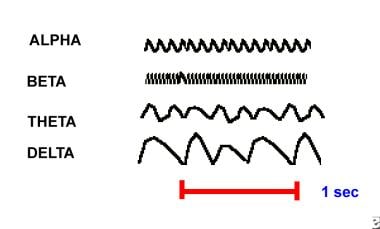

In contrast, in a former study of EEG synchronization during REM sleep, we found evidence that at least a portion of the cortical synchronization seems to be independent of the current state of vigilance. Like the conventional EEG parameters, these linear and nonlinear synchronization measures seem to be subject to similar changes across the wake-sleep cycle: the amount, the spatial distribution, and the temporal dynamics of EEG synchronization depend on the respective waveforms as well as on the current state of vigilance and alertness. Nonlinear measures like nonlinear interdependences and phase synchronization can detect interhemispheric synchronization with higher sensitivity than cross-correlation and coherence function. However, algorithms that comprise nonlinear as well as linear interactions on short time scales (within the millisecond range) often permit a more precise estimation of the dynamics of spatiotemporal EEG synchronization. Coherence and cross correlation and other linear measures have been applied effectively to the EEG. Since most EEG waves are synchronized across several EEG leads, an expansion of the conventional single-channel evaluation to regional and global EEG coupling analysis can reveal complex intracortical interactions.

The EEG frequency spectrum and the distribution of EEG transients vary extensively across the wake-sleep cycle. Therefore, it might be suited for EEG analysis in clinical situations without stable vigilance. RISE designates the recurrence of transiently synchronized cortical microstates that are independent of specific EEG waves, the spectral content of the EEG, and especially the current state of vigilance. The generators of RISE could be coupled corticocortical neuronal assemblies which might be modulated by subcortical structures. Thus, a fundamental coupling pattern with recurrent increases of synchronization in the EEG (“RISE”) seems to exist during the brain’s resting state. Mean synchronization had high frontal and occipital levels and low central and midtemporal levels. This temporal dynamics of synchronization remained stable throughout all states of vigilance, while the dominant frequencies of synchronized phases changed markedly. Recurrent EEG synchronization appeared and ceased abruptly in the anterior, central, and temporal derivations in the posterior derivations it appeared more fluctuating. We applied PTI to the waking and sleep EEGs of 21 healthy sleepers we calculated the mean levels and distances of synchronized episodes and estimated the dominant frequency shift from unsynchronized to synchronized EEG segments by spectral analysis. Pointwise transinformation (PTI) provides a quantitative nonlinear approach to spatiotemporal synchronization patterns of the rhythms of coupled cortical oscillators.


 0 kommentar(er)
0 kommentar(er)
